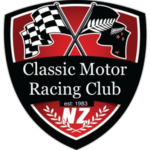In the late 1920’s a young engineer designed a most unusual motorcycle engine. It was a pair of OHC parallel twins geared together in a four cylinder block with a single head. The idea was taken up by Ariel and became the Square 4. The designer was Edward Turner, and his legacy is the stuff of legends.
But the depression was not a good time for young motorcycle designers. Ariel went broke in 1932 and in 1936 Triumph split its car and bike divisions to remain afloat. The bike side was merged with the rump of the Ariel business and the new combine, renamed the Triumph Engineering company, took Turner on as its first Managing Director. By 1951 Triumph, BSA and Ariel were all under the same roof and Turner’s cross frame twins had became the quintessential British motorcycle engine. Had he stopped there we would still be saluting him today.
The Daimler V8s

In 1956 the conglomerate grew to include Daimler cars and a specialist bodywork manufacturer called Carbodies. The existing Daimler engines were outdated so Turner turned his mind to replacement ones. This time V8’s. Hemis. Two of them to be precise. One of 2.5 litres for smaller cars and a bigger 4.5 for heavier work. The two engines share the same design features and have similar external dimensions. (A Wiki says that the two are near bolt in replacements for each other – something worth knowing if you want to up-rate your Dart). The resulting Daimler engines gave a nod and a wink to contemporary American V8s but were a bit smaller. They were also designed for small production runs, and made less concessions to the accountants. In production spec, at just shy of 1 HP per cubic inch, the 2.5 is right up there with the best of the contemporary American engines.

Comparing the 4.5 with its contemporary similar size mid 50’s Dodge Red Ram highlights the advantages of these Pommie jewels. The 4.5 Daimler pulls 220 HP on twin SU carburettors. The equivalent Red Ram 5 litre just 150. The Dodge is 30% heavier and made 30% less power than the Daimler. These engines really deserved a bigger audience. The heads are an adaptation of motorcycle twin cam practice, but with a crankcase camshaft and pushrod actuated valves in similar format to the Dodge/Chrysler hemis. The power assembly itself shares features with Turner’s big twin motorcycle engine. The Triumph Bonneville bike piston has the same gudgeon pin sizing and another Wiki says with a very small overbore will go straight into the 2.5. A competition T’Bird or Bonnie cam profile does the job here as well. In the U.S. the 2.5 found its way into speedway midgets (production engines were allowed to be bigger than the Offy dirt trackers) but were promptly banned.
The competition heritage of these engines is almost vanishingly small, maybe a function of their small production run. Around about 20,000 2.5s were made and 2,000 or so 4.5s over a 10 year production run. A marinised 2.5 was also available.
Kiwi Connections.

New Zealand proved to be a little hot spot competition wise for them. Both David Oxton and Laurence Brownlie cut their teeth in Daimler Darts. The Heron Daimler sports racer was built in ’65 (this author recalls hauling it off a flag marshalls post at Baypark in ’68, and yes that is an 8 Amal carb setup). George Begg put one into a single seater a couple of years later, the engine having been tweaked by the Stone brothers in Auckland. Fast forward another couple of years and another, slightly destroked version, turns up in the ex Peter Yock Lotus 25. This arrived in NZ with a 2 litre BRM fitted for Tasman Formula racing, but that engine was troublesome. The car found a home with Peter Hughes for the ’69 season, fitted with a 2.5 Daimler tweaked with many ancillary bits off the now defunct BRM (manifolds, fuel injection, flywheel). But it never did run well.


The Wattle Question. (Wattle she do?)
The web says that these engines are hard to find, expensive to rebuild, but worth the effort. Power wise the standard 2.5 put out 140 HP. Scuttlebutt is that a factory build with 8 Amals and a T’Bird competition cam made 200 HP. I have a vague and unsubstantiated memory that 220HP was claimed for the Peter Hughes engine. The British Racecar website quotes 245 for a modern build on quad Webers. If you want to explore this engine just a little bit more then have a chat to Brian Ashworth next time you see his red SP 250 at one of our meetings. Be prepared to stay awhile, Brian is a real enthusiast for them.
Nostalgia wise try the following sites for pictures and data.
Larry Ligas’ 1961 Daimler 250.
The Nostalgia Forum Bill Pottinger Collection.
The Nostalgia Forum Ian Peak Collection.
